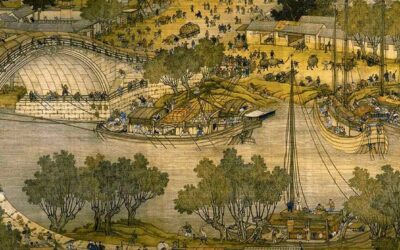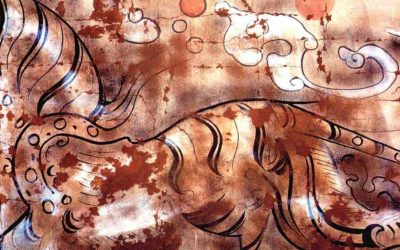David Holm. Mapping the Old Zhuang Character Script – A Vernacular Writing System from Southern China. Brill, Leiden and Boston, 2013.
- Excerpts from the preface
The traditional Zhuang character script is an instance of a sinoxenic script, that is, a script in which the Chinese character script has been borrowed and modified to write a different language, in this case the Tai language now known as Zhuang.
In the south and southwest of China, the expansion of the Chinese state from the Qin dynasty onwards gave rise to a number of character scripts among non-Han Chinese peoples. these scripts include the old Bai script of the Ěrhǎi 洱海 region in present-day Yunnan and scripts used by the Kam (Dong), Miao, Yao, and other groups in Guizhou, Hunan, Guangdong, Guangxi, and Yunnan…the Zhuang script is probably one of the oldest of these: as we shall see, reading pronunciations of individual graphs frequently correspond to early Middle Chinese, and occasionally to even earlier strata of Chinese.
This book is based on a survey of the use of the script in Zhuang speaking counties throughout Guangxi and contiguous provinces. At least one traditional text was collected in each county, and texts surveyed for the ways in which a list of sixty common words were written.
This work has a twofold aim. First, as a contribution to Zhuang (tai) linguistics in its own right, the work will demonstrate and document the existence of major regional graphic systems as well as instances of local innovation…Secondly, the book is intended as a work of reference. it is designed to be useful as a resource for scholars working in the field of historical linguistics and postgraduates in a range of disciplines including sinology, linguistics, and comparative tai.
Excerpt from the Conclusion (p. 772)
The influence of the Meishan Taoists on the Zhuang script in east-Central Guangxi calls out for further comment. Other Taoist schools and Buddhists for the most part had scriptures, liturgical texts and handbooks only in Chinese, and gave recitations only in some variety of Chinese during the conduct of public and private rituals. the Meishan Taoists in Guangxi, however, had around one third of their texts in the Zhuang character script, and likewise performed a substantial proportion of their ritual repertoire in Zhuang. There is thus a massive amount of literature including manuals, handbooks, playscripts, and narratives in verse that is connected with Meishan practitioners in this area. This circumstance is connected with the kinds of rituals the Meishan practioners performed and the division of labour between them and the Maoshan Taoists operating in the same areas. In Guangxi, at least, Maoshan practioners were chiefly responsible for funerals and requiem services. By contrast, the Meishan Taoists, like Lǚshān 閭山 Taoists further to the east in Fujian and other areas, were ‘vernacular’ Taoist priests, and conducted rituals connected with illness, childbirth, and the expulsion of demons, much of it in the local language and often accompanied by masked ritual dances miming the descent of the gods down into the ritual arena. Meishan Taoists had an ordination centre in Guilin, but the teaching came originally from Jiangxi, and the tradition entered Guangxi from the northeast.
In the east-central part of Guangxi, Meishan Taoists moved westwards out of their previous strongholds in the northeast and east, and established new local organisations, called ‘ritual-master halls’ (shīguǎn 師館), in Guixian, Laibin and further west, expanding rapidly in the course of the
18th and 19th centuries. They were still expanding westwards into the highland regions along middle reaches of the Hongshui river in recent decades. In the northern counties of Guangxi, a somewhat different variety of the Meishan tradition took hold in the Longjiang river valley, in
Huanjiang among the ethnic Maonan, and northwards into Libo and contiguous areas in southern Guizhou. It too rapidly became indigenised.
- Contents
List of Maps and tables
Preface
Notes on transcription
List of Abbreviations
Part 1: introduction—Mapping the Old Zhuang Script
Part 2: Survey of Graphs used for Common Words
1 Aen clf. for inanimate objects
2 Aeu to take
3 Bae to go
4 Baenz to accomplish
5 Bak mouth
….
…
Part 3: Conclusion
Appendix 1 List of texts included in the Survey
Appendix 2 Common Words in Jingxi Sub-Group Dialects
Appendix 3 the Most Common representations of Common Words
Bibliography
Character index
Index
Last posts
Praise for the book on Chinese characters
Praise for the book on Chinese characters Good News! I'm happy to share that my book Chinese Characters: An Easy Learning Based on Their Etymology and Evolution has been selected by BookAuthority.org as one of The Best Etymology Books for Beginners! BookAuthority...
The Qingming Festival: From Spring Celebration to Festival of the Dead
The Qingming Festival: From Spring Celebration to Festival of the Dead The Qingming Festival (清明节) is today China’s Day of the Dead—the time when people remember their deceased relatives and travel to cemeteries located on the outskirts of cities, or to tombs built in...
Linghu Zhuan’s Skepticism Leads Him to the Underworld
Linghu Zhuan’s Skepticism Leads Him to the Underworld Linghu Zhuan was a man of great integrity who did not believe in gods or spirits. Whenever someone spoke of ghostly transformations or divine retribution in the afterlife, he refuted their words with compelling...







